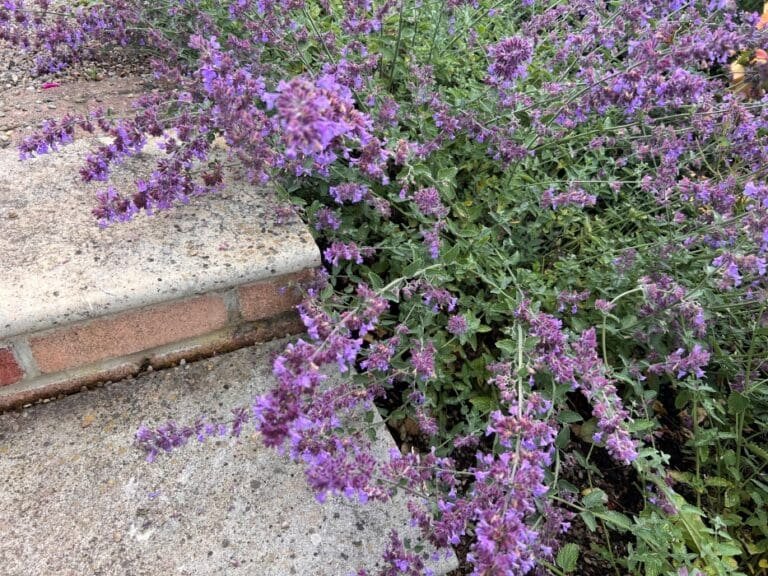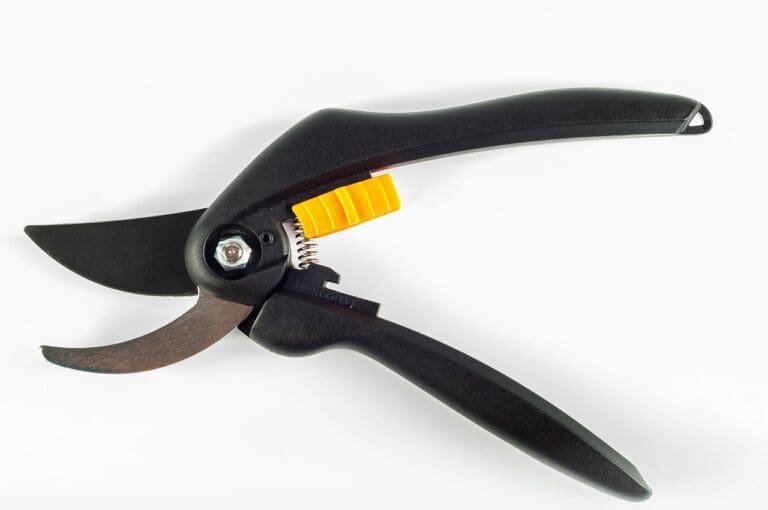The ‘Chelsea Chop’ is more than just a catchy phrase—it’s a tried and tested pruning technique, commonly implemented by UK gardeners towards the end of May. It’s named in honour of the annual RHS Chelsea Flower Show, which coincides with this pruning period.
The primary goal of the ‘Chelsea Chop’ is to manage plant growth, encouraging the development of side shoots for a more compact and sturdy plant structure.
Top Tip
Always water generously after the ‘Chelsea Chop’ to aid plant recovery and promote growth.
This post contains affiliate links which means we may make commission from any qualifying sales with no extra cost to yourself.
What are the advantages of carrying out the 'Chelsea Chop’?
You might be wondering why you should consider the ‘Chelsea Chop’ in your gardening routine. Here’s why:
- It curtails plants from getting overly tall or ‘leggy.’
- It stimulates more compact and fuller growth, leading to an increased bloom count.
- It reduces the need for staking, making your plants less susceptible to damage from stronger winds.
How do you carry out the 'Chelsea Chop’?
Contrary to what you might think, the ‘Chelsea Chop’ is not a complex process. It’s relatively straightforward, even for those new to gardening. As we inch closer to the end of May or start of June, grab your sharp secateurs or shears. Proceed to trim your herbaceous perennials by about 30% – 50% of their current size.
If your cuttings are in good condition, don’t discard them—use them to propagate more plants. After the pruning session, remember to water your plants to assist their recovery.
What plants can be pruned with the ‘Chelsea Chop’?

Primarily, the ‘Chelsea Chop’ is applied to herbaceous perennials to encourage side shoot growth and more compact plants. Some plants that respond particularly well to the annual ‘Chelsea Chop’ include Nepeta, Lavender, Sedums, Echinacea, Phlox, Achillea, Rudbeckia, and the increasingly popular favourite, Verbena Bonariensis.
The ‘Chelsea Chop’ is a gardener’s secret weapon to ensure their garden is not only vibrant and full of flowers but also sturdy and resistant to harsh weather. So, gear up and give your plants the Chelsea treatment they deserve!
Common Mistakes to Avoid When Performing the 'Chelsea Chop'
While the ‘Chelsea Chop’ is a straightforward technique, there are some common missteps that can inadvertently lead to less-than-ideal outcomes. Here are a few to keep in mind:
Incorrect Timing
The ‘Chelsea Chop’ is traditionally performed at the end of May or the start of June. Pruning too early can lead to a lack of bloom, while pruning too late might not give your plants enough time to recover and flourish. Keep an eye on the calendar to ensure you’re chopping at the optimum time.
Using Dull Tools

Sharp secateurs or shears are crucial for a clean cut. Using dull or blunt tools can damage the plant, leading to jagged cuts that are more susceptible to disease. Always ensure your tools are sharp and clean before you start.
Over or Under Pruning
Trimming your plants by 30%-50% is the recommended amount. Overzealous pruning can stress the plant and hinder growth, while too little might not produce the desired compactness. If you’re unsure, it’s better to err on the side of under-pruning—you can always prune a little more later.
Pruning the Wrong Plants
While many herbaceous perennials respond well to the ‘Chelsea Chop’, not all plants will benefit. Research each plant type before making the chop. For example, plants that bloom only once in a season, like Peonies or Irises, should not be chopped as it could lead to a loss of flowers for that year.
By avoiding these common mistakes, you can ensure that your ‘Chelsea Chop’ not only improves the shape and sturdiness of your plants but also contributes to the overall health and vibrancy of your garden.
Final Thoughts
The ‘Chelsea Chop’ is more than just a clever gardening term—it’s a time-honoured technique that can truly transform your garden. It not only helps maintain the structure and size of your plants but also stimulates richer blooms and increased resilience.
Remember to avoid common pitfalls, like incorrect timing or using the wrong tools. With careful implementation and a bit of practice, you’ll find the ‘Chelsea Chop’ to be an indispensable part of your gardening toolkit. So, grab your secateurs, and happy pruning! Your garden will thank you for it.
Frequently Asked Questions
Q: Which plants can have the Chelsea Chop?
The ‘Chelsea Chop’ is generally most effective on herbaceous perennials. Plants that respond particularly well include Nepeta (Catmint), Lavender, Sedums, Echinacea, Phlox, Achillea, Rudbeckia, and Verbena bonariensis. Always research or consult a gardening expert if you are unsure about a particular plant.
Q: Can you Chelsea chop Sedum?
Yes, Sedum, or stonecrop, is an excellent candidate for the ‘Chelsea Chop.’ The technique helps prevent the plants from flopping under the weight of their blooms later in the year, resulting in a more compact and sturdier plant that’s full of flowers.
Q: Can you give Geraniums the Chelsea Chop?
Hardy Geraniums, also known as Cranesbill Geraniums, can certainly benefit from the ‘Chelsea Chop.’ The process can help revitalise these plants, encouraging them to produce more compact growth and a second flush of flowers later in the season.
Q: Can you Chelsea chop Foxgloves?
Generally, Foxgloves are not ideal candidates for the ‘Chelsea Chop.’ Foxgloves are biennial or short-lived perennials that bloom once and set seed. Chopping them may eliminate their flower spikes for the season. Always remember, if a plant blooms only once in a season or if it’s a biennial, it’s usually best to refrain from giving it the ‘Chelsea Chop.’
Please remember to always do a bit of research or seek expert advice if you’re unsure about whether a specific plant in your garden would benefit from the ‘Chelsea Chop.’






